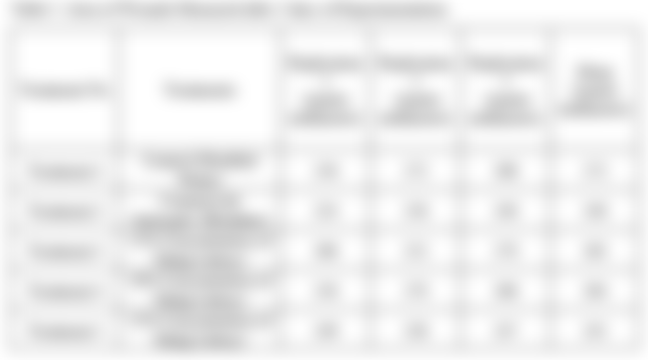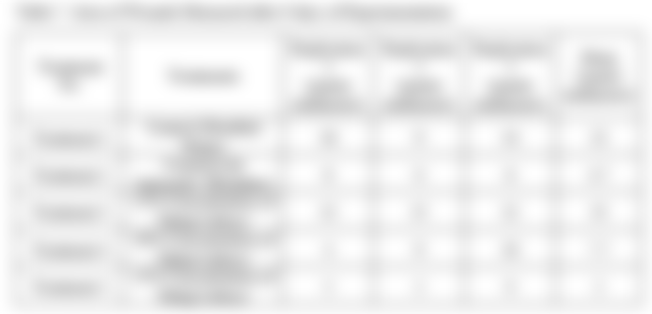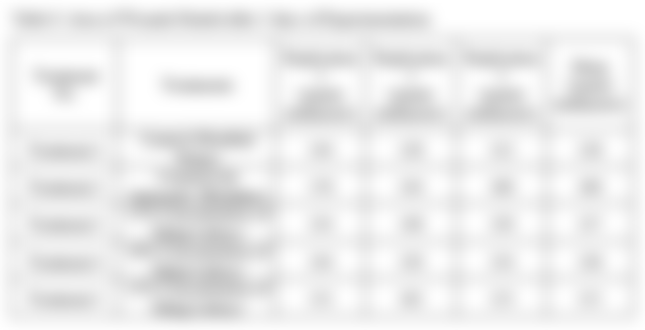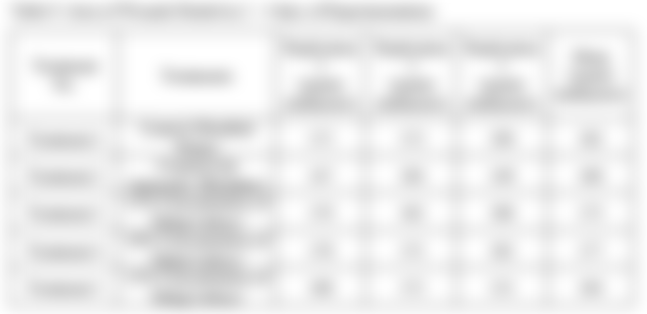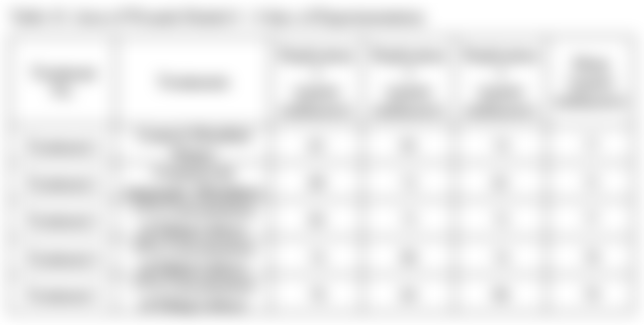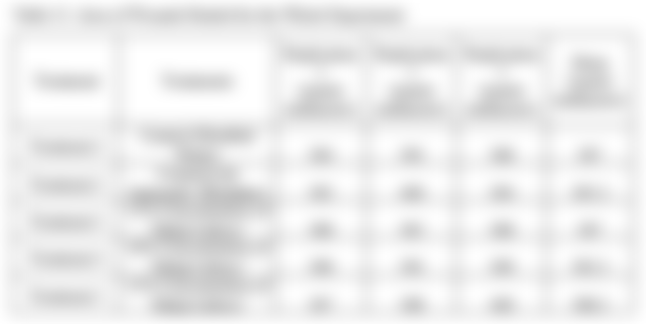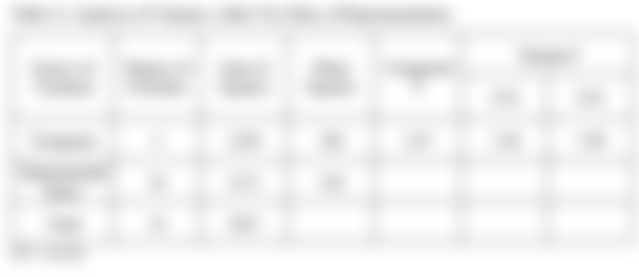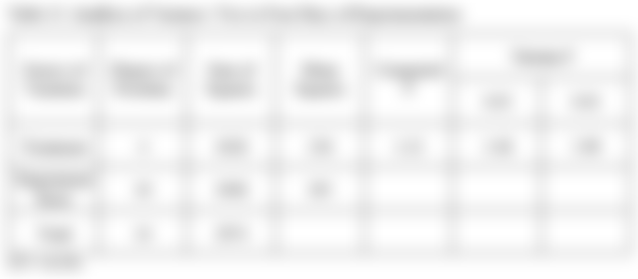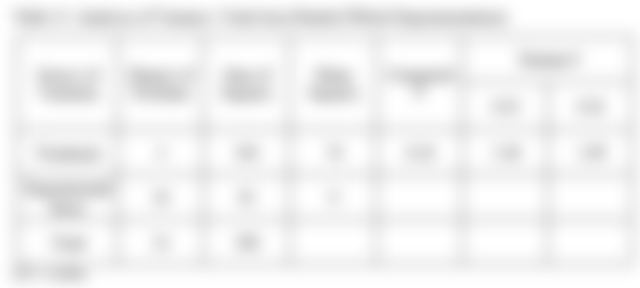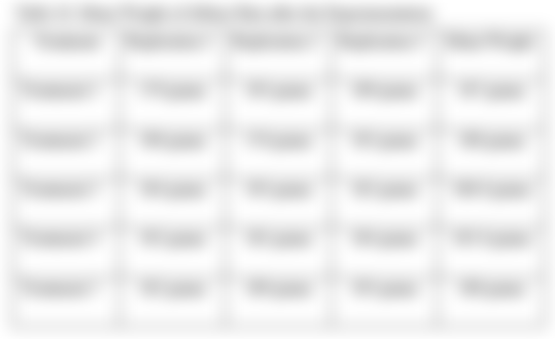RESULTS AND DISCUSSION
A. Area of Wounds Measured in the Experimentation
The following tables show the measurements of wounds on each replicates of different treatments in albino rats. These were gathered by measuring the area of wounds after 2 days, 4 days, and 6 days of experiment respectively in the unit of millimetre. The data in the tables were not used in the calculations for ANOVA (Analysis of Variance) but it was used in getting the area of wounds healed. It is the measurement of the area healed by the treatments in the wounds that was used for the calculations and not the area of wounds itself. The conclusions were not made based in these tables but instead, in the result of ANOVA.



B. Area of Wounds Healed in the Experimentation
The following tables show the area of wounds healed by different treatments over time and not the area of wounds itself. It only encompasses the area of wounds healed to its time range like for Table 8, the measurements indicated in the table only pertains to the area healed in two to four days of experimentation and not the area of wounds healed from the start of the experimentation to the fourth day. Also in table 9, the measurements indicated only pertains to the area healed in four to six days of experimentation.
The data in the tables were congregated by subtracting the area of wounds in the observation period to the area of wounds measured in the previous record. Like for example in table 7, the measurements in the table were gathered by subtracting the data in table 4 to the previous wound area which is four hundred square millimetre (400mm2). In table 8, the data were gathered by subtracting the data in table 5 to the data in table 4. Likewise in table 9, the data were gathered by subtracting the data in table 6 to the data in table 5. The conclusions were not made based in these tables but instead, in the result of ANOVA. These data in the tables were only used in the calculations for ANOVA (Analysis of Variance).



C. Area of Wounds Healed for the Whole Experiment
Table 10 shows the area of wounds healed by the treatments in every replicates for the whole experiment (6 days). It is made in the purpose of showing the total area healed by the treatments in each replicate. Unlike tables 7, 8, and 9, it covers the area healed of the treatments for the whole target experimentation period (six days). The whole conclusions were primarily based in this data.

D. Analysis of Variance for the Treatments’ Efficacy in Abrasion

Table 11 shows the data from the computation for analysis of variance for the first two days after the experimentation. This shows that the treatments have significant difference for the first two days since the computed F value, which is 8.26, is greater than the 5% tabulated F values which is 3.48. This implies that the treatments have already different effects on abrasion. Due to this implication, another calculation which is LSD (Least Significant Difference) was done to know if what significant difference occurs between treatments or to know what treatments are most effective to less effective.
The calculations for LSD were shown in appendix and based on the calculation, treatment 2 (betadine) has the highest efficacy in healing an abrasion type of wound after 2 days of experimentation compare to other treatments. It was followed by treatment 5 containing 25% concentration of siling labuyo fruits. Treatment 3 with 15% concentration has a higher efficacy compare to treatment 4 but has lower efficacy compare to treatment 4. Treatment 1 on the other hand as the control group or the distilled water, has the lowest efficacy compare to other treatments. This only implies that for 2 days, treatments 2, 3, 4, and 5 are effective since they have higher healing rate compare to treatment 1 which is the control group.

Table 12 shows the data from the computation for analysis of variance for two to four days of experimentation. This shows that the treatments have no significant difference for two days to four days since the computed F value, which is 1.32, is less than the 5% tabulated F values which is 3.48. This implies that the treatments’ effects in wounds for the period of two to four days are just equal, meaning they all have the same efficacy in this time range. There’s no need for the calculation for LSD since based on ANOVA, treatments have no significant difference.

Table 13 shows the data from the computation for analysis of variance for four to six days of experimentation. This shows that the treatments have no significant difference for two days to four days since the computed F value, which is 0.07, is less than the 5% tabulated F values which is 3.48. This implies that the treatments’ effects in wounds for the period of four to six days are just equal meaning they all have the same efficacy in this time range. Like in table 12, there’s no need for the calculation for LSD since based on ANOVA, treatments have no significant difference.

Table 14 shows the data from the computation for analysis of variance for the whole experimentation. This shows that the treatments have significant difference since the computed F value, which is 8.26, is greater than the 5% tabulated F values which is 3.48. This implies that the treatments have different effects on abrasion.
Based on the LSD calculation, treatment 2 (betadine) and treatment 5 (25% concentration of siling labuyo fruits) have equal effectiveness as antiseptic solution in abrasion type of wound for six days. These two treatments are also the treatments acquiring the highest efficacy as antiseptic solution compare to other treatments. Treatment 4 (20% concentration) on the other hand is the treatment with higher efficacy compare to treatments 3 and 1. In the same basis, treatment 3 with 15 % of siling labuyo fruits and treatment 1 as control variable have proven to have the same efficacy with the lowest effectiveness compare to other treatments. The calculation also implies that the higher the concentration of siling labuyo fruits, the higher its efficacy as antiseptic for abrasion.
E. Mean Weight of Albino Rats after the Experimentation
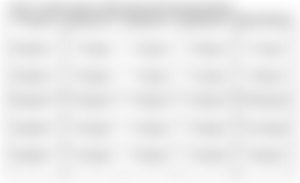
The table shows the weight of the used albino rats in the experimentation after the experiment. If to compare the weight gathered before the experimentation and after the experimentation, it shows that albino rats didn’t lose weight meaning the animals involved in the study weren’t stressed at all.
F. Ph Level of Produced Antiseptic and Betadine
The ph level of the produced antiseptic solutions was measured using litmus paper and so with the betadine. And based on it, all treatments have found out to be alkaline which means the produced antiseptic solutions are comparable to commercial product which is betadine.
